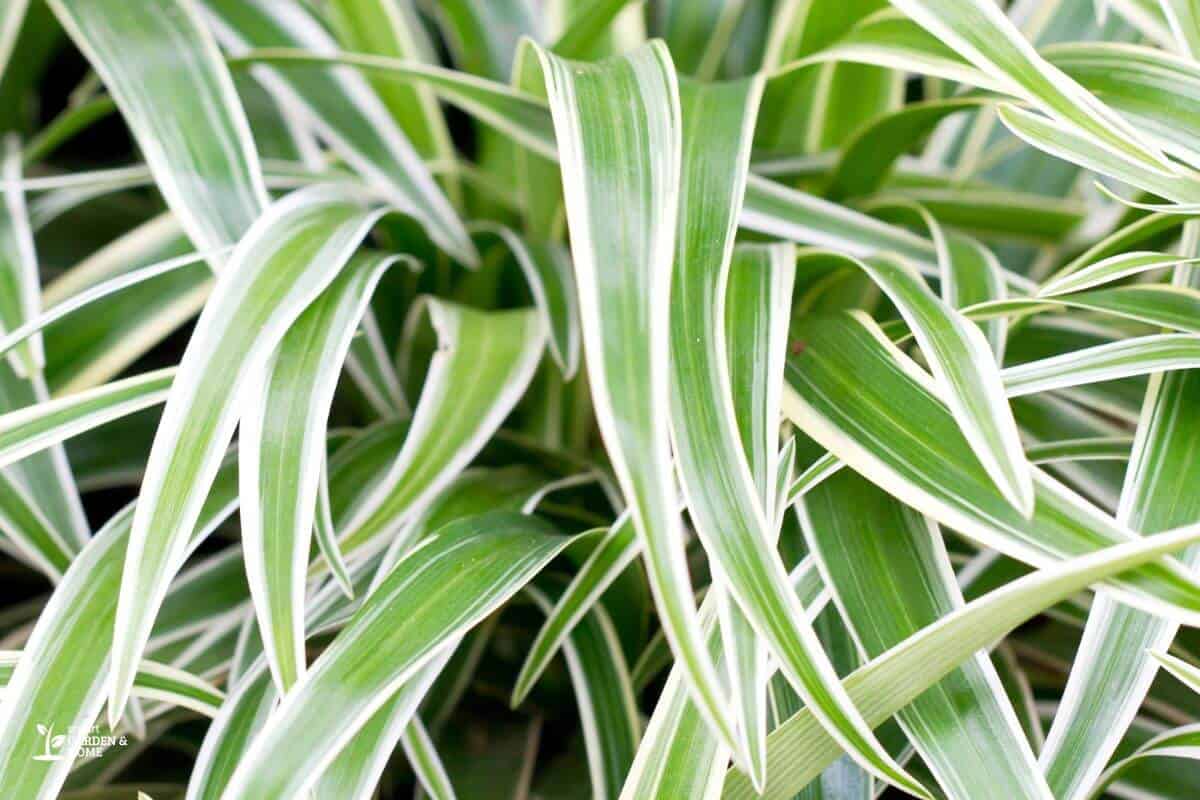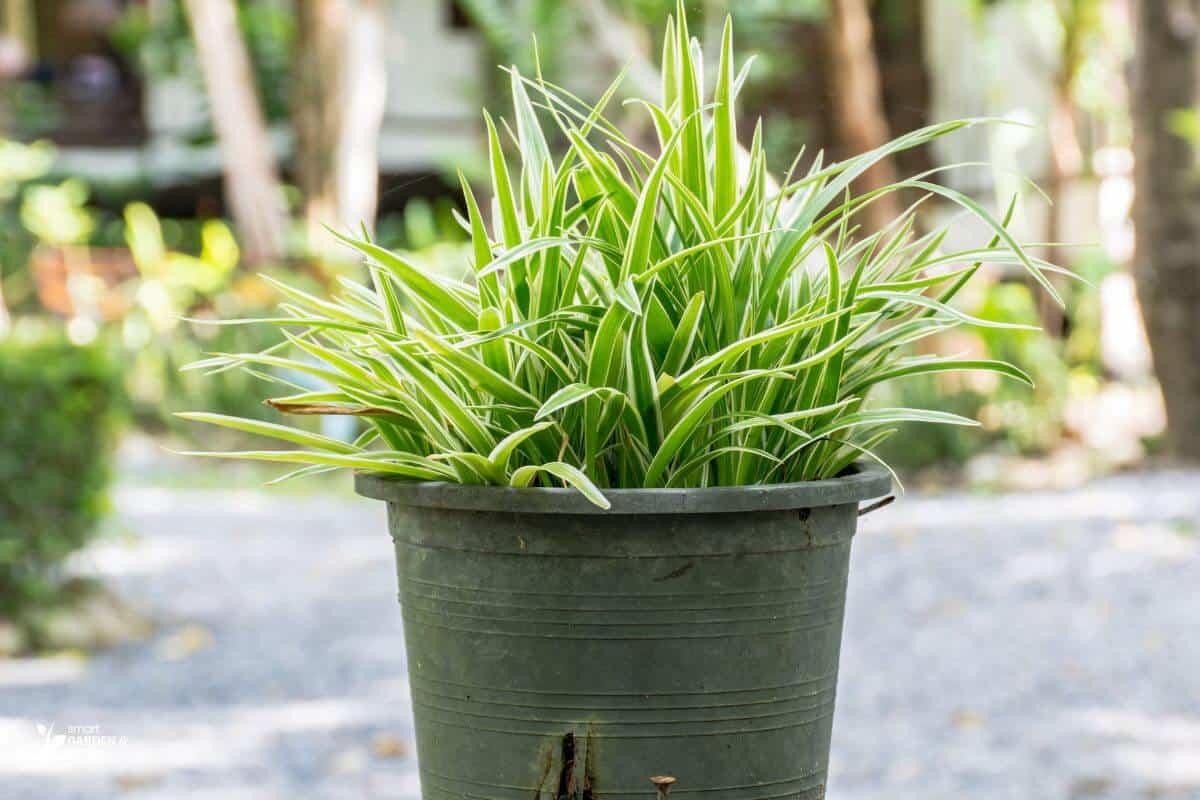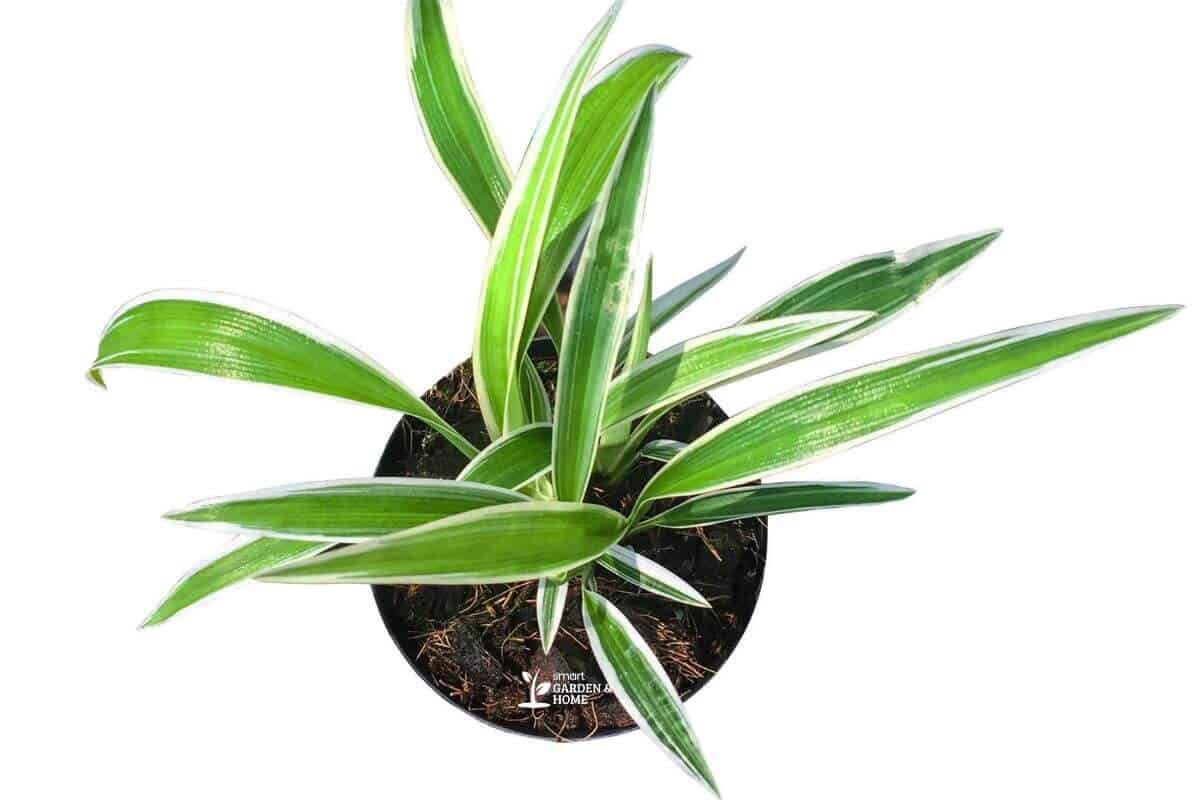Spider plants (Chlorophytum comosum) or airplane plants are prone to suffer from root rot. This can be caused by overwatering, poor drainage, infection, cold temperatures, and overfertilization.
The first step to tackle this problem is to repot your spider plant as soon as you notice signs of possible root rot since your plant could wilt within two weeks.
When a plant’s roots are compromised, it won’t be able to absorb the nutrients it needs. This lack of nutrients in the roots will cause its health to deteriorate.
You can sometimes tell if your plant is suffering from root rot by observing its leaves and overall appearance. However, it’s always best to inspect the plant’s roots to be certain.
- Related Article: Caring for Spider Plant Outdoors
Keep your spider plant thriving and healthy by looking out for common signs of root rot early on.
Signs of Spider Plant Root Rot

If you observe the following symptoms, your spider plant is probably suffering from root rot:
1. Yellowing of the leaves
2. Brown or black spots appear on the leaves
3. Leaves start falling out
4. Wilted leaves
5. The plant is drooping (even after fertilization)
6. There is no growth in size
7. No offshoots are forming
It’s important to notice that these problems could also be caused by a pest infestation, exposure to extreme weather, or other factors.
This is why it’s important to get rid of the soil around the root ball and inspect the roots more closely. These are the signs of root rot to look for:
1. Mushy roots: the infected roots are soft to the touch.
2. Fragility: the roots break easily when touched.
3. Paleness: the roots look like they lost their color.
4. Foul odor: there is a strong smell of decay.
5. Pliability: there is no rigidity and the spider roots can be easily bent.
Causes of Spider Plant Root Rot

1. Overwatering
Spider plants have thick roots that have evolved to store water, so they easily suffer if they are kept in soil with too much excess water.
2. Poor Drainage
This occurs when the container or the type of soil being used isn’t suitable for spider plants.
A pot that doesn’t have drainage holes at the bottom won’t allow the excess water to flow out and soil that’s too dense or too rich in clay will retain too much water.
It’s also important that the pot used is of the right size since a large one will store a lot of moisture. Spider plants do not particularly love sitting in wet soil.
3. Infections
Pathogen infections are the most common cause of root rot in spider plants.
Infections occur when insects or fungi find their ideal environment in the plant and start spreading. In particular, moisture is what allows many pests to thrive.
4. Cold Temperatures
If it’s too cold, your spider plant will be stressed and the soil will take longer to dry resulting in soggy soil.
Never keep your spider plant below 55°F, but also keep in mind that too high a temperature can cause other problems. The ideal range for these tropical plants is somewhere between 56°F -80 °F.
5. Too Much Water During the Winter
In the cold season, spider plants go dormant. Since during this time their growth slows considerably or stops altogether, they don’t need to be watered as much as they do in the growing season.
Additionally, colder temperatures mean that less water evaporates and more stays in the soil than in the summer.
6. Overfertilization
Spider plants don’t need much fertilizer and by overfeeding them you would compromise the healthiness of the soil, thus affecting the roots and the entire plant.
As they become weaker, roots are more prone to develop root rot.
Treatment of Spider Plant Root Rot

1. Repot
Save your spider plant from root rot by taking it out of its current pot, removing contaminated soil, cleaning the root ball, and placing the plant into a new pot with fresh soil.
If you’re planning to use the old container, make sure to use a bleach solution in cleaning it. You should rinse the roots thoroughly and cut away any rotten ones to avoid the disease from spreading any further.
Always use clean and sterilized tools and choose a pot with drainage holes. The soil should be well-draining and you should be careful not to press it too much so the roots have space to breathe.
2. Choose the Right Soil
The spider plant potting mix you use is very important to ensure that your plant has moist soil but isn’t drowning in excess water.
A good choice for this indoor plant is a general-purpose potting mix enriched with perlite or peat moss to increase drainage and avoid wet soil.
3. Water When It’s Needed
Spider plants should be watered when the top layers of the soil are dry and not before.
Keeping a regular schedule can be helpful to avoid forgetting your plant, but always check the soil with your finger to avoid the soil becoming too soggy. Water less during the winter.
4. Avoid Overfertilizing
As we mentioned, providing too much fertilizer can damage spider plant roots, so adjust your feeding schedule according to the season and the type of fertilizer you use.
5. Provide the Right Conditions
A stressed plant is more prone to get sick, so your best bet to prevent future problems is to provide indirect light, warm temperatures, and humidity. In this way, your plant will be healthy and strong and be more able to fight off infections.
6. Use Hydrogen Peroxide
Hydrogen Peroxide has oxygen molecules that aid in aerating the soil to allow plants to better absorb water and other nutrients. Make sure to dilute the solution properly as a high concentration can do the roots more harm than good.
The ratio is one part 3% hydrogen peroxide to 4 parts water. Use a spray bottle to gently mist the base of your plant with the solution but avoid the leaves.
Hydrogen peroxide acts as a fungicide that can help in eliminating bugs. It can also prevent illnesses and fungal diseases.
Final Thoughts on Spider Plants and Root Rot
Spider plants are popular houseplants that is loved by many due to their hardy properties.
They are easy to care for and can tolerate various environmental fluctuations. However, just like any other plant, they are still susceptible to root rot and other illnesses when given too much neglect.
Prevention is always preferred over cure so make sure that you always take time to observe your plant so early signs of root rot can be detected immediately.
Root rot is caused by overwatering, lack of proper drainage, insect or fungus infections due to wet conditions, cold temperatures, and overfertilizing.
To prevent your spider plant from getting root rot it is important to repot it into a pot with adequate drainage holes and well-draining soil; water only when the top layer of soil is dry; avoid overfertilizing; and keep it away from direct sunlight.
If you liked this article about spider plants and root rot, go ahead and check out more great reads below:
- Why Is My Spider Plant Leaning Over
- Spider Plant Leaves Keep Bending
- Spider Plant Leaves Turn Yellow
- Is My Spider Plant Dying
- Why Is My Spider Plant Not Growing
Sources:

